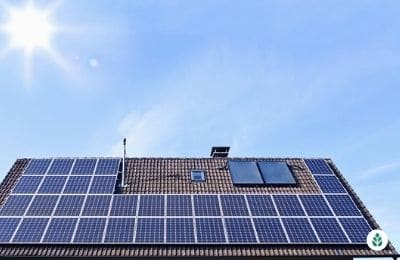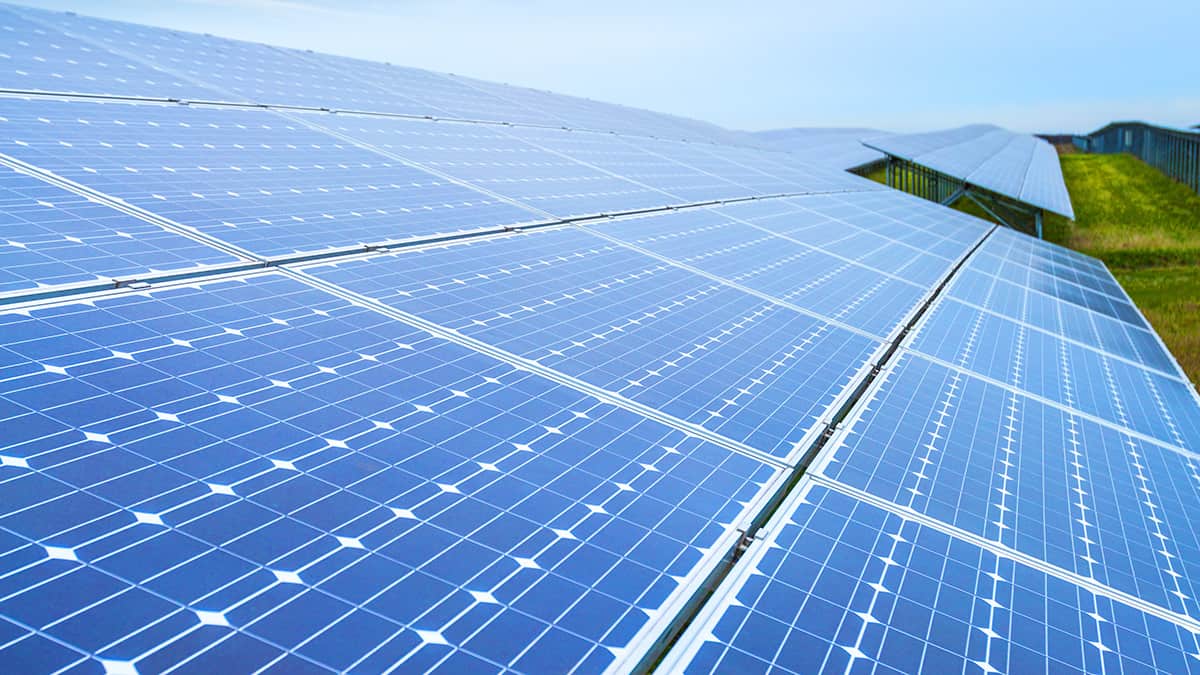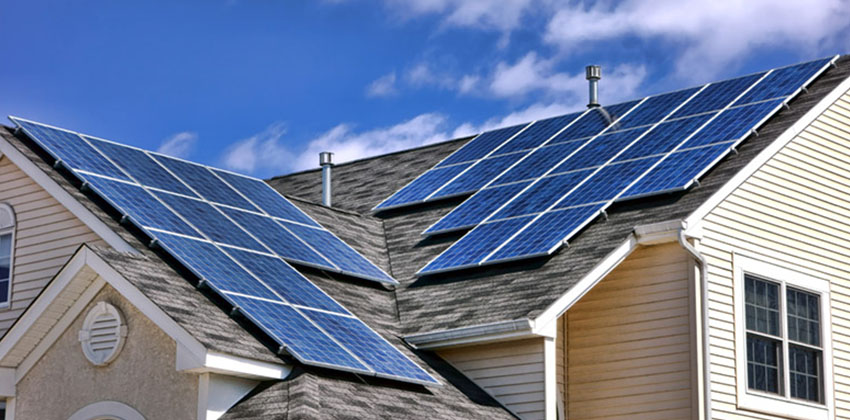Solar cells are highly efficient in converting sunlight into electricity, with efficiencies ranging from 15% to 22%. Solar cells have proven to be a highly efficient means of harnessing solar energy and converting it into usable electricity.
With efficiencies typically ranging from 15% to 22%, these cells offer a reliable and sustainable solution for generating power from the sun. By utilizing the photovoltaic effect, solar cells absorb sunlight and create an electric current, enabling the generation of clean and renewable energy.
Besides their high efficiency, solar cells also provide numerous environmental benefits, such as reducing greenhouse gas emissions and minimizing reliance on fossil fuels. As technology continues to advance, the efficiency of solar cells is expected to improve even further, making them an increasingly viable and attractive option for power generation.

Credit: www.ecowatch.com
The Basics Of Solar Panel
Solar cells are known for their impressive efficiency in converting sunlight into electricity. With modern advancements, solar cells have become more efficient than ever, maximizing the energy output from the sun’s rays. Discover the basics of solar cells and how their efficiency makes them a sustainable energy solution.
What Are Solar Cells?
Solar cells, also known as photovoltaic cells, are devices that convert sunlight directly into electricity. These cells are made of semiconducting materials, typically silicon, which have the ability to create an electric current when exposed to sunlight. Solar cells are the building blocks of solar panels, which are used to harness solar energy and generate clean, renewable electricity.
How Solar System Work
Solar cells work based on the principle of the photovoltaic effect, which is the process through which sunlight is converted into electricity. When sunlight hits a solar cell, it is absorbed by the semiconducting material. This absorbed light energy excites the electrons in the material, causing them to break free from their atoms. The freed electrons then flow through the material, creating an electric current. This current can be captured and utilized to power various devices and electrical systems.
In order to understand how solar cells work more effectively, let’s break it down into simpler steps:
-
- Step 1: Absorption of Sunlight
Sunlight contains tiny packets of energy called photons. When sunlight strikes a solar cell, the photons are absorbed by the semiconducting material, typically silicon, within the cell.
-
- Step 2: Creation of Electron-Hole Pairs
As the photons are absorbed by the semiconducting material, they transfer their energy to the atoms within the material. This causes some of the electrons in the atoms to break free, leaving behind “holes” or spaces where electrons used to be.
-
- Step 3: Separation of Electrons and Holes
The freed electrons are negatively charged, and the holes are positively charged. Due to this opposite charge, the electrons and holes are attracted to each other. However, the structure of the solar cell prevents them from recombining immediately.
-
- Step 4: Creation of Electric Field
A solar cell is designed with a junction between two differently doped layers of semiconductors. This creates an electric field. The electric field pushes the separated electrons and holes in opposite directions, preventing them from recombining and contributing to the flow of electric current.
-
- Step 5: Flow of Electrons and Current
The electrons flow through the semiconducting material, while the holes move in the opposite direction. This movement of electrons and holes creates an electric current that can be captured by metal contacts on the top and bottom of the solar cell.
This is a simplified explanation of how solar cells work. In reality, solar cells are often combined into larger solar panels to generate higher amounts of electricity. By harnessing the power of the sun, solar cells offer a clean and sustainable solution for meeting our energy needs.

Credit: physicsworld.com
Factors Affecting Solar Panel Efficiency
When it comes to harnessing the sun’s energy and converting it into electricity, solar cells play a vital role. However, not all solar cells are created equal. The efficiency of solar cells can vary based on several factors. In this post, we will delve into these factors and understand how they affect the efficiency of solar cells.
Material Composition
The material composition of solar cells is one of the key factors that determines their efficiency. Different materials have varying abilities to absorb sunlight and convert it into electricity. Silicon-based solar cells, for instance, are widely used due to their high efficiency and stability. These cells utilize a semiconductor material, silicon, which efficiently absorbs photons and generates electric current. On the other hand, thin-film solar cells employ materials like cadmium telluride or copper indium gallium selenide, which offer lower manufacturing costs but may have lower efficiency compared to silicon-based cells.
Temperature Effects
The temperature at which solar cells operate can greatly impact their efficiency. Solar cells generate electricity when exposed to sunlight, and as they absorb light, heat is also generated. However, excessive heat can negatively affect their performance. High temperatures can cause an increase in the resistance of the cell, leading to a reduction in the current generated. The overall efficiency of the solar cell can decrease as a result. Therefore, it is crucial to consider cooling methods or design mechanisms that dissipate excess heat to maintain efficient performance.
Measuring Solar Cell Efficiency
Solar cell efficiency is a key factor in gauging their effectiveness. By measuring the amount of sunlight converted into usable energy, the efficiency of solar cells is determined. This crucial data helps in optimizing solar technologies and maximizing energy production.
Measuring Solar Cell Efficiency
Solar cell efficiency is a crucial factor in determining the effectiveness of solar energy systems. Efficiency Calculation involves evaluating the ability of solar cells to convert sunlight into electricity. This process helps in understanding how much of the absorbed sunlight can be transformed into usable energy. It is essential to measure the solar cell efficiency correctly to ensure optimal performance and reliability.
Standard Test Conditions
Standard Test Conditions (STC) are used to measure the performance of solar cells under specific environmental conditions. These conditions include a temperature of 25°C, an irradiance level of 1000W/m^2, and the solar spectrum of Air Mass 1.5. The use of STC allows for the comparison of different solar cell technologies and ensures standardized testing procedures across the industry.
Calculating the efficiency of solar cells involves dividing the electrical power output by the incident light power. The efficiency (%) is then determined by multiplying the result by 100. This measurement is vital for assessing the performance of solar cells and comparing the effectiveness of different technologies. It also helps in determining the economic viability of solar energy installations.
In conclusion, measuring the efficiency of solar cells through standardized testing conditions and accurate calculations is essential for evaluating their performance and determining their suitability for various applications.
Latest Technological Advancements
One of the most exciting aspects of solar cell technology is the constant evolution and development of new advancements. In recent years, there have been significant breakthroughs that have greatly improved the efficiency of solar cells, making them even more reliable and cost-effective. Today, we’ll delve into two cutting-edge technologies that are revolutionizing the solar industry: Multi-Junction Solar Cells and Perovskite Solar Cells.
Multi-junction Solar Cells
Multi-junction solar cells are a type of solar cell that are designed to capture a broader spectrum of light, maximizing energy conversion efficiency. Unlike traditional solar cells that are made from a single material, multi-junction cells incorporate multiple layers of different materials. Each layer is optimized to absorb a specific portion of the light spectrum, ensuring that more photons are converted into electricity. This technology has proven to be highly efficient, with conversion rates reaching over 40% in laboratory settings. As a result, multi-junction solar cells are increasingly being used in advanced applications such as space satellites and concentrated solar power systems.
One of the main advantages of multi-junction solar cells is their ability to efficiently convert light into electricity even under low light conditions. This makes them suitable for use in regions with varying weather patterns or less sunlight, while still providing a steady and reliable source of energy. Additionally, these cells have a smaller footprint compared to traditional solar panels, making them an ideal choice for space-constrained installations.
Perovskite Solar Cells
Perovskite solar cells are a relatively new and rapidly developing technology that has shown immense promise in achieving high conversion efficiencies. Perovskite materials have a unique crystal structure that allows them to absorb a wide range of light wavelengths, making them highly efficient at converting sunlight into electricity. This technology has garnered significant attention due to its low production cost and ease of fabrication compared to traditional solar cells.
Currently, perovskite solar cells have achieved conversion efficiencies surpassing 25%, making them one of the most efficient solar cell technologies available. What makes perovskite cells particularly exciting is their potential for further improvement. Researchers are actively exploring ways to enhance their stability, longevity, and scalability, which will be crucial for their widespread adoption in commercial applications.
In conclusion, the latest technological advancements in solar cell technology, including multi-junction solar cells and perovskite solar cells, are continuously pushing the boundaries of efficiency and performance. These advancements offer great potential for increasing the effectiveness and accessibility of solar power, ultimately leading us towards a sustainable energy future.
Real-world Efficiency Performance
The efficiency of solar cells is a crucial factor to consider when assessing the viability of solar energy as a renewable power source. Understanding the real-world efficiency performance of solar cells helps us evaluate their practical applications and effectiveness in converting sunlight into electricity. In this article, we will delve into the challenges faced in implementing solar cells, as well as explore the current commercial solar cell efficiency.
Challenges In Practical Applications
While solar cells efficiently convert sunlight into electricity in laboratory environments, their real-world performance is affected by various challenges. Some of the key challenges include:
- Limited sunlight availability: Solar cells rely on sunlight to generate electricity, and factors such as cloudy weather, shade, and night-time significantly reduce their performance.
- Variations in solar radiation: The amount of sunlight received on Earth varies depending on geographical location, time of day, and weather conditions. These variations directly impact the efficiency of solar cells.
- Losses during energy conversion: During the conversion of solar energy into electricity, some energy is lost as heat or due to inefficiencies in the conversion process. These losses reduce the overall efficiency of solar cells in practical applications.
- Temperature effects: High temperatures can negatively impact the performance of solar cells, causing a decrease in efficiency. Heat can reduce the voltage output and accelerate aging of the materials.
Overcoming these challenges in real-world scenarios is vital to ensure the effective utilization of solar cells and maximize their efficiency for practical applications.
Commercial Solar Cell Efficiency
Commercial solar cell efficiency refers to the efficiency achieved by solar cells available in the market. The efficiency of commercial solar cells has significantly improved over the years, presenting a more cost-effective and viable solution for harnessing solar energy.
Currently, the most efficient commercial solar cells have achieved an efficiency of around 24%. However, it is important to note that this efficiency is based on ideal laboratory conditions and may vary in real-world scenarios due to the challenges mentioned earlier.
Efficiency is one of the key factors to consider when selecting a solar cell for practical applications. High-efficiency solar cells can produce more electricity with a smaller surface area, making them suitable for space-constrained installations. Moreover, higher efficiency translates to more electricity generation, maximizing the return on investment.
In addition to overall efficiency, it is also important to consider factors such as durability, reliability, and cost when evaluating the commercial viability of solar cells.
As technology continues to advance and research progresses, we can expect further improvements in solar cell efficiency and performance. These advancements will contribute to the widespread adoption of solar energy as a sustainable source of electricity, addressing the growing global energy demand.
Environmental Impact Of Solar Cell Efficiency
Solar cell efficiency has a significant impact on the environment. The higher the efficiency, the more energy can be generated from sunlight, reducing the need for fossil fuels and lowering carbon emissions. Increasing solar cell efficiency is crucial for a sustainable and cleaner future.
The environmental impact of solar cell efficiency is a crucial consideration in assessing the overall sustainability of solar energy. Life Cycle Assessment and Sustainability Considerations are essential aspects to evaluate in this regard.
“`html
Life Cycle Assessment
“`
Life Cycle Assessment (LCA) is a comprehensive method for evaluating the environmental impacts of products or technologies throughout their entire life cycle. It encompasses the extraction of raw materials, manufacturing, transportation, installation, operation, maintenance, and end-of-life disposal. By conducting a detailed LCA, the environmental effects of solar cells, including their energy consumption, emissions, and potential ecological damage, can be thoroughly analyzed.
“`html
Sustainability Considerations
“`
Sustainability considerations in the context of solar cell efficiency revolve around assessing the long-term ecological balance and ensuring that the use of solar energy does not deplete natural resources or cause significant harm to the environment. This involves examining the overall sustainability of the materials used in solar cells, their potential for recycling or reuse, and the wider environmental benefits in terms of reducing greenhouse gas emissions and mitigating climate change.
Understanding the environmental impact of solar cell efficiency is imperative for making informed decisions regarding the deployment of solar energy systems. By employing rigorous life cycle assessment methodologies and integrating sustainability considerations, we can ensure that solar cells contribute positively to the environment while delivering clean and renewable energy.
Future Prospects And Innovations
The future prospects and innovations in the field of solar cells hold immense promise for the renewable energy industry. Researchers are constantly working towards improving the efficiency, durability, and cost-effectiveness of solar cells, making them a viable option for widespread adoption. In this section, we will explore the latest trends in solar cell research and potential breakthroughs that could revolutionize the field.
Trends In Solar Cell Research
The research in solar cell technology is driving significant improvements in their efficiency and performance. Scientists and engineers are exploring various avenues to maximize the energy conversion potential of solar cells. Some of the prominent trends in solar cell research include:
- Perovskite Solar Cells: Perovskite-based solar cells have gained considerable attention due to their high efficiency and low-cost manufacturing. Researchers are working on refining the fabrication techniques and stability of these cells, making them even more commercially viable.
- Multijunction Solar Cells: By combining different semiconducting materials, multijunction solar cells have the potential to achieve higher efficiency levels compared to traditional silicon-based cells. Ongoing research aims to enhance the efficiency and reduce the production costs of these advanced solar cell designs.
- Thin-Film Solar Cells: Thin-film solar cells offer flexibility and versatility in their applications. Scientists are continually investigating new materials and manufacturing processes to improve the efficiency and scalability of these cells.
Potential Breakthroughs
Several potential breakthroughs are on the horizon, which could revolutionize the solar cell industry. These breakthroughs include:
- Perovskite Tandem Cells: Tandem solar cells, combining perovskite and silicon technologies, have the potential to significantly increase overall efficiency by utilizing both the visible and infrared range of the solar spectrum. Researchers are actively working on overcoming the technical challenges associated with integrating these two materials seamlessly.
- Nanotechnology Enhancements: Nanotechnology offers exciting possibilities for improving solar cell efficiency. Innovative techniques such as nanowires, quantum dots, and plasmonic effects are being explored to augment light absorption, charge transport, and stability of solar cells.
- Third-Generation Solar Cells: Third-generation solar cell technologies aim to overcome the limitations of traditional silicon-based cells. These technologies, including organic photovoltaics, dye-sensitized solar cells, and quantum dot solar cells, offer the potential for higher efficiencies and lower production costs.
The constant advancements and ever-evolving nature of solar cell research provide hope for a renewable future. With the ongoing innovations and emerging technologies, solar cells are poised to play a pivotal role in meeting the world’s energy demands in the years to come.

Credit: www.solar.com
Frequently Asked Questions On How Efficient Are Solar Cells
Faq 1: How Efficient Are Solar Cells?
Solar cells can convert sunlight into electricity with an efficiency ranging from 15% to 20%, depending on the technology used.
Faq 2: What Factors Affect The Efficiency Of Solar Cells?
The efficiency of solar cells can be influenced by factors such as temperature, shading, dust, and the angle and direction of the solar panels.
Faq 3: Are Solar Cells A Reliable Source Of Energy?
Solar cells have proven to be a reliable source of energy, with a long lifespan of up to 25 years and minimal maintenance requirements.
Faq 4: Can Solar Cells Generate Electricity On Cloudy Days?
Yes, solar cells can still generate electricity on cloudy days, although their output may be reduced compared to sunny days.
Faq 5: Are Solar Cells Environmentally Friendly?
Solar cells produce clean and renewable energy, emitting no greenhouse gases or air pollutants during the generation process, making them environmentally friendly.
Conclusion
Solar cells have proven to be a highly efficient and sustainable energy source. Their ability to harness the power of the sun and convert it into electricity offers a promising solution for our ever-growing energy needs. As technology continues to advance, the efficiency of solar cells will only improve, making them a key player in the transition to a greener future.